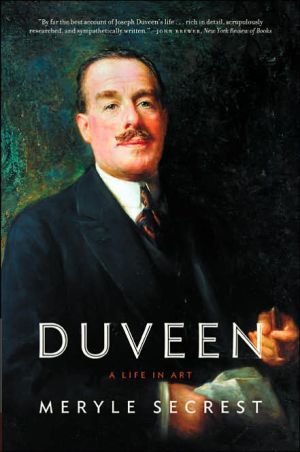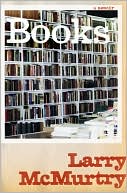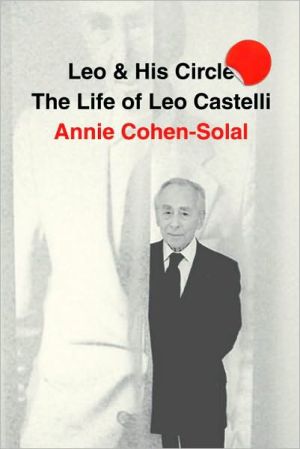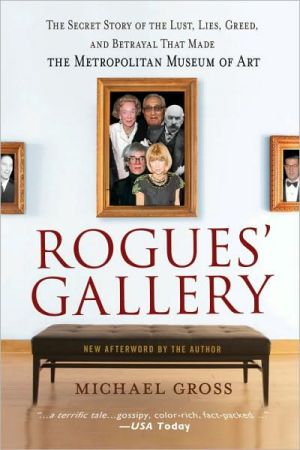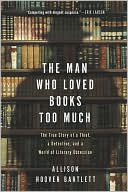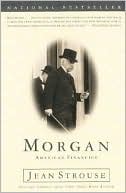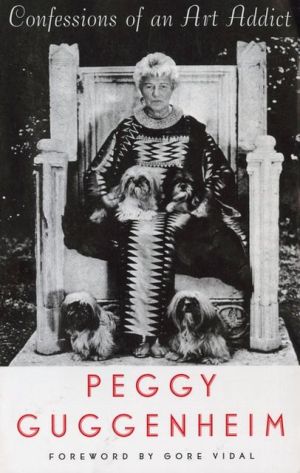Duveen: A Life in Art
Anyone who has admired Gainsborough's Blue Boy of the Huntington Collection in California, or Rembrandt's Aristotle Contemplating the Bust of Homer at the Metropolitan Museum of Art in New York owes much of his or her pleasure to art dealer Joseph Duveen (1869–1939). Regarded as the most influential—or, in some circles, notorious—dealer of the twentieth century, Duveen established himself selling the European masterpieces of Titian, Botticelli, Giotto, and Vermeer to newly and lavishly...
Search in google:
Anyone who has admired Gainsborough's Blue Boy of the Huntington Collection in California, or Rembrandt's Aristotle Contemplating the Bust of Homer at the Metropolitan Museum of Art in New York owes much of his or her pleasure to art dealer Joseph Duveen (1869–1939). Regarded as the most influential—or, in some circles, notorious—dealer of the twentieth century, Duveen established himself selling the European masterpieces of Titian, Botticelli, Giotto, and Vermeer to newly and lavishly wealthy American businessmen—J. P. Morgan, John D. Rockefeller, and Andrew Mellon, to name just a few. It is no exaggeration to say that Duveen was the driving force behind every important private art collection in the United States. The first major biography of Duveen in more than fifty years and the first to make use of his enormous archive—only recently opened to the public—Meryle Secrest's Duveen traces the rapid ascent of the tirelessly enterprising dealer, from his humble beginnings running his father's business to knighthood and eventually apeerage. The eldest of eight sons of Jewish-Dutch immigrants, Duveen inherited an uncanny ability to spot a hidden treasure from his father, proprietor of a prosperous antiques business. After his father's death, Duveen moved the company into the riskier but lucrative market of paintings and quickly became one of the world's leading art dealers. The key to Duveen's success was his simple observation that while Europe had the art, America had the money; Duveen made his fortune by buying art from declining European aristocrats and selling them to the "squillionaires" in the United States."By far the best account of Joseph Duveen's life in a biography that is rich in detail, scrupulously researched, and sympathetically written. [Secrest's] inquiries into early-twentieth-century collecting whet our appetite for a more general history of the art market in the first half of the twentieth century."—John Brewer, New York Review of Books The Washington Post - Anton GillChapter Eleven, which concentrates on the murky and even murderous world of art forgery, is a delight. And it is a revelation to discover just how shady the respected father of modern art criticism, Bernard Berenson, could be, at a time when there were few reproductions of artworks and when purchasers, often no experts themselves, had to rely on advisers.
Chapter One\ \ The Chase\ \ It is generally agreed that, of the select band of women enterprising enough to be called collectors in the nineteenth century, Lady Charlotte Schreiber won hands down. Possessed of considerable means, dauntless energy, and the zest for the chase which is the natural prerequisite for the making of great collections, Lady Charlotte knew no barriers when it came to her own quarry. These included lace, fans, and playing cards, and, above all, ceramics. She loved china with a passion in the days when hardly anyone knew enough to recognize Chelsea, Bow, Worcester, and Derby, or cared, leaving such treasures to be picked up in any old junk shop for derisory sums. The more she collected, in those halcyon days of the 1860s and 1870s, the more enthralled she became by the chase. As her son Montague Guest wrote, "She hunted high and low, through England and abroad; France, Holland, Germany, Spain, Italy, Turkey, all were ransacked; she left no stone unturned, no difficulty, discomfort, fatigue, or hardship of travel daunted her, or turned her from her purpose, and she would come back, after weeks on the Continent . . . rich with the fruits of her expeditions"\ \ No doubt she benefited from those tips by anonymous scouts that figure so largely in such narratives. On one occasion she learned that there were some wonderful pieces of china for sale in a tiny farmhouse miles from any town or railway. In the pursuit of such hidden treasure a collector needed to be infinitely ready to conjure up any means of transportation available. There is an eyewitness account of this particular hunt, so typical of Lady Charlotte's enterprise, by someone who had alsoreceived a tip, perhaps from the same source. He, too, was hot on the trail, which involved an inordinately slow and lengthy journey by train. As this hunter neared the quarry he observed a passenger coach on a road parallel to the tracks coming toward him. The fly roared past at breakneck speed, but he managed to catch a glimpse of a certain indomitable face. He knew, before he reached his destination, that he had arrived too late.\ \ The disappointed buyer was Joel Joseph Duveen, a man who, it must be said, was her equal in terms of energy, dash, and devil-may-care determination. It is sometimes thought that his son Joseph Duveen, the most spectacular art dealer the world has ever known, appeared in all his singularity from a back street in the Yorkshire town of Hull. This convenient fiction glides over the fact that the future Lord Duveen was in all essential respects modeled after his equally formidable father. Here was a man who, in the best Horatio Alger tradition, began from nothing, coming from nowhere, and at the end of a scintillating career, as Sir Joseph Duveen, was dining with aristocrats and on intimate terms with kings, rich, successful, and feared. To take charge of an establishment that has risen to the heights of Old Bond Street is not quite the same as having reached there in the first place; but that is another part of the story.\ \ The riddle of Joseph Duveen starts with the story of his father, and in both men one sees characteristics that were to imprint these personalities on their age; men who, like Isambard Kingdom Brunel, for instance, but metaphorically, threw bridges across chasms and hollowed out mountains to reach their goals. An early photograph of Joel Joseph shows a wide, high-cheeked face, one ear dextrously cocked, as if awaiting the latest rumor, a fussily trimmed beard and mustache, broad, flat, pudgy hands and the insouciant air of a man who will leap up in a second and dash out of the door. The expression is alert and good-natured, optimistic; and there is something about the smile that suggests someone not only prepared to challenge authority but used to discovering, as Alice did in Wonderland, that most barriers built by custom and snobbery are nothing but packs of cards.\ \ It is true that Joel Joseph was self-made, but to say that he came from nowhere is perhaps not quite the case. Looking down the Duveen lineage one finds generational mirrors refracting ever fainter reflections of collectors and dealers in furniture, porcelains, tapestries, and Old Master paintings. Jacques Duveen, who later took the name of Jack, wrote a valuable account of the Duveen family origins and the early life of Joel Joseph, based on conversations he had with his uncle in the years before the latter's death in 1908; he called it The Rise of the House of Duveen. Jack claimed to have traced the family pedigree back to the seventeenth-century Du Vesnes (hence, Duveen), who were related to Eberhard Jabach. This head of a family of wealthy merchant bankers was a Sephardic Jew who moved from Spain to France during one of the early persecutions. He was well enough known to have been painted by Sir Anthony van Dyck and Charles le Brun, and was a distinguished art collector, one of the principal buyers at the sale of the collection of the ill-fated Charles I (1600-1649), another exemplary patron of the arts, particularly Italian painting. Jack Duveen wrote in Art Treasures and Intrigue, "The tradition is that when [Jabach] returned from the sale he entered Paris at the head of a convoy of wagons loaded with artistic conquests, like a Roman victor at the head of a triumphal procession." Even Jabach's considerable resources were not limitless, and when he, a few years later, was obliged to sell 110 of his best paintings to Louis XIV (1638-1715), the collection formed the nucleus of what would become the Louvre. Among the most famous works were three incomparable paintings by Giorgione: Rustic Concert, Holy Family with St. Catherine, and St. Sebastian and Donor; Titian's Christ at Emmaus, Entombment, Jupiter and Antiope, and Mistress; Correggio's Antiope; and Caravaggio's Death of Mary: acknowledged masterpieces of the Italian Renaissance. All the glory that such names conjured up became synonymous with a fabulous past, and the name of Duveen, so carelessly corrupted from the aristocratic Du Vesne, a constant noble reminder of what had been lost.\ \ During the French Revolution one of Jabach's descendants, Henoch Elkan Duveen, emigrated from Paris to Holland, where, in 1810, he took over a small iron foundry in Meppel. Joel later told A. C. R. Carter that his grandfather had been an army contractor for horses and their equipment to the King of Saxony. So the legend began that Joel had begun life as a blacksmith's apprentice, and in fact he is listed as such in the Meppel registry, according to a Dutch chronicler of the Duveen family. Joel's father, Joseph Henoch Duveen (Henoch Elkan's son), was more than a blacksmith, however. The same account notes that he was a manufacturer of stoves and heaters, specializing in iron safes fitted with secret locks. A smithy was attached to the foundry and Joel claimed to have learned how to make horseshoes as part of a lengthy apprenticeship while being groomed for a future in manufacturing. Starting them young and making them proficient in every aspect of the business became one of his maxims when the time came to train his own sons.\ \ One of Henoch Elkan's cousins, Levy Joseph-the names are confusing, since they recur down through the generations, with hardly any alteration-also fled from France during the same period and somehow assumed the surname of Hangjas, no one knows quite how. He established a branch of the family which carried on the tradition of trading in antiques, setting himself up in business in The Hague. The two branches remained in contact, and there was more than one intermarriage between first cousins. One male member of the Hangjas branch even assumed the name of Duveen when he married one of the Duveen girls.\ \ Managing an ironworks would seem something of a departure from the inherited family passion, but even that had a precedent. Jack Duveen wrote that his grandfather Jacob Levy Hangjas, Levy Joseph's son, dealt in old metals as well as running a wholesale business in antiques and had a warehouse and wharf on the river Spaarne for the dismantling of steamships. Joel's father had also dealt in antiques before he took over the ironworks and passed that business on to one of his daughters, a girl who married the Ridder (Chevalier) van Esso, or Essoo. To give a business to a girl was unusual in those days. Girls were more often moved around like pawns in the game of tightening family connections or consolidating spheres of influence, a game at which art dealers excelled, like minor principalities. None played it better than the Duveens, the Hangjas branch in particular. Several Hangjas girls married leading art dealers of the day: De Maan, Van Schaak, and a man named Levy Fresco, said to have owned the gallery that served as the model for Dickens's novel The Old Curiosity Shop. By such prudent methods intricate chains of association were forged that could have satisfying consequences.\ \ Joel Joseph Duveen, born in Meppel on April 30, 1843, was named for the great-great-great-grandfather who was descended on the female line from Eberhard Jabach. No doubt that significant point was impressed on him at an early age, and if he showed any talent for the antique business, there was no shortage of teachers. Jack Duveen relates that Joel was indeed a willing pupil under the tutelage of his aunt, the one who had married the Ridder van Esso. Her specialty is not described, but it would have been axiomatic that a Dutch dealer would have a sophisticated knowledge of ceramics. He or she would know, in the case of old Delft polychrome pottery, then becoming increasingly scarce and prized, that a Paris firm was making a clever profit from nice copies. He would learn about the confusing marks separating genuine old silver from its mundane, therefore modern, facsimiles. He would have to know how Oriental porcelain, called Oost Indiesch in Holland, had been made, so that he could instantly recognize the genuine and rare from its many counterfeits. He would have studied those hieroglyphics adorning the bases of vases and ornaments and learned to decipher their significance. He would be able to tell when a piece of china had been repaired or tampered with, no matter how delicate the hairline of evidence. Similarly, he would know where to look for those minute clues verifying antique Chippendale from virtually identical reproductions. Thanks to intensive training, he could discern an Old Master beneath layers of discolored varnish and defacing restorations and be equally able to spot a fake, no matter how persuasively painted in the ateliers of Rome and Paris. He would be able to make a discovery at an auction and then know how to conceal that fact by a show of indifference. The first imperative was that he could not be fooled and the second, that he learn to dissemble, hiding his real feelings; perhaps the most important lesson of all.\ \ As for the chase itself, the feints, subterfuges, and stratagems, the deceits, intrigues, and double dealings, learning all that took a lifetime. Such knowledge was never written down, but learned by rote like great epic poems until a student could predict every move, giving that extra negotiating advantage that makes all the difference. He would also have become an aesthete, because any dealer who wanted to attract wealthy clients had to have a collector's instinct. The curious fact was that most of them did. The Duveens either had or developed superb memories and an uncanny ability to spot hidden treasures. They called it the Duveen eye.\ \ Joel's future seemed assured, but then there was a family tragedy. In his irresistible biography of Duveen, published in 1951, the playwright S. N. Behrman has demoted Joseph Henoch Duveen to a blacksmith and describes his wife as a simple farm woman with a penchant for collecting bits of cheap Delft. This picturesque version of events is the probable reason why Jack Duveen was moved to write his own account in 1957. He writes that Joel's mother, Eva van Minden of Zwolle, was no ignorant country girl but the well-educated daughter of an East India merchant. She appears not to have had the least interest in collecting, but inspired her son with her love of books and music and made sure he was properly educated. Joel was her firstborn; then came two daughters, Jette and Betje (Betsy), Jack's future mother, and finally Henoch (Henry), born in 1855 and twelve years Joel's junior. Eva Duveen was beautiful and cultivated but physically fragile, and an invalid for the final years of her life, dying at the age of fifty-two on August 20, 1864. Her parting words to her firstborn, then aged twenty-one, were to look after his sisters and nine-year-old brother and care for his father. This last piece of advice turned out to be prescient because, after Eva's death, Joseph turned to drink for consolation, dangerously neglecting his business affairs. Joel had been trained to take charge, and suddenly the full burden of managing the ironworks had fallen on him. His efforts failed, largely due to his inexperience of the ways of the world. He had neglected to grease the palm of a government inspector, and a lucrative contract was revoked as a result, effectively bankrupting the firm.\ \ Jack Duveen makes no mention of recriminations between father and son, but these seem likely, even inevitable. Besides, Joel was hardly a boy anymore. Duveens, who began working as early as sixteen or seventeen, were expected to be making their mark by their early twenties. Joel had been given a major responsibility and had made a mess of it. He had to leave home-the sooner, the better. It is charming to think of him setting out for England with boxes of his mother's Delft under his arm, as Behrman narrates. The prosaic truth, according to Jack Duveen, is that an uncle gave him a letter of introduction to some wholesale importers of Dutch produce in Hull on the North Sea named Doumouriez and Gotschalk. Leaving his father and younger sisters and brother behind, he sailed for England in 1866 and was hired as a lowly apprentice-an indignity for someone his age-at the minuscule sum of fifteen shillings a week.
List of Illustrations Preface and Acknowledgments Genealogy A Note on Exchange Rates 1. The Chase 2. Bond Street 3. Lady Louisa Manners 4. The Rajah's Pearl 5. The Sound of a Sell 6. Living with Cachet 7. "Spy Maria" 8. The Fay Case 9. The Chase Continues 10. The Blue Boy 11. The Demotte Affair 12. La Belle Ferronière 13. The Disappearing Baby 14. "Keep Alive" 15. "I Cannot Wait"16. In the Elevator 17. A Proper English Gentleman 18. Rain on the Lawn Notes Paintings, Sculptures, and Objects Sold or Donated by Joseph Duveen, 1900-1939: A Partial List Index
\ Anton GillChapter Eleven, which concentrates on the murky and even murderous world of art forgery, is a delight. And it is a revelation to discover just how shady the respected father of modern art criticism, Bernard Berenson, could be, at a time when there were few reproductions of artworks and when purchasers, often no experts themselves, had to rely on advisers. \ — The Washington Post\ \ \ \ \ Roberta SmithAnyone interested in art or the art world will enjoy this book. It casts light on the travels of some of the world's greatest pictures and the evolution of some of its greatest public collections, especially in the United States, as well as the invention of the old master paintings market. Most of all, it details an early example of the art dealer as a connoisseur, socialite, evangelist, gadfly and mercenary that remains a model today.\ — The New York Times\ \ \ Publishers WeeklyNo one played the high-stakes game of buying and selling Old Masters better than Joseph Duveen, later Lord Duveen of Millbank, who dominated the world art market during the 1920s and '30s. Using the Duveen Brothers' archives, recently made public, biographer Secrest (Being Bernard Berenson) delves into the history of the storied firm, chronicling the career of the audacious entrepreneur who headed it during its heyday, selling Rembrandts, Titians and other costly artworks to the likes of Andrew Mellon, J.P. Morgan and Henry Clay Frick. Duveen was a consummate salesman whose ingenious strategies included a network of "spies" who reported on the lifestyles of his wealthy clients; when a great work of art came on the market, Duveen could determine which multimillionaire would most appreciate it and then cajole and flatter him into the purchase. Secrest paints an engrossing picture of the art-dealing world, fraught with intrigues, betrayals and lawsuits, to say nothing of fakes, forgeries and misattributions. She shows how Duveen maneuvered successfully in this perilous arena; while some of his contemporaries considered Duveen "up to every artful dodge," he probably never knowingly sold a fake. Sadly, his career ended with a giant misstep when he masterminded the overcleaning of the Elgin Marbles at the British Museum. Duveen's life makes a fascinating story, well told in this accomplished biography. Photos not seen by PW. Agent, Lynn Nesbit. (Sept.) Copyright 2004 Reed Business Information.\ \ \ \ \ Kirkus ReviewsAfter a decade-long sojourn among musicians (Stephen Sondheim, 1998, etc.), Secrest returns to her previous specialty (Being Bernard Berenson, 1979, etc.) with a portrait of the world's greatest art dealer. The flamboyant Lord Duveen (1869-1939) is still notorious in Britain for persuading aristocrats to sell him such items of their country's cultural patrimony as Gainsborough's Blue Boy. He invariably sold this plunder to American "squillionaires" as he called them, in time becoming a squillionaire himself. Making use of the newly unsealed Duveen Archive, Secrest documents the family's origins and the complicated history of the Duveen firm with all its internecine quarrels. Specifically, the author clarifies the term "Duveen," which today is tossed about as if it all referred to Joe (as he was informally known). In fact, there was first his father's antiques shop, which Joe took over, but also several competing firms set up by brothers and cousins, all of whom Joe scared off, bought off, absorbed, or sued. Due to such business maneuvers and his long association with art historian Berenson, who authenticated Italian masters for him and sometimes made convenient changes of attribution, Duveen has always been considered a slippery character, and his biographer's tone is breezy and superior, bordering on condescending. (She also occasionally gets in over her head with art history.) Duveen's considerable charm, however, survives the treatment he receives from Secrest, who acknowledges his acts of philanthropy to British museums and the manipulation of his stable of American clients to establish great public collections, improve private collections, or donate to already establishedinstitutions. The author struggles to keep Duveen in the context of his own age, but frequently judges him based on contemporary standards of conservation and ethics. She does make it clear that museums in Britain and the US would be far worse off without the great Duveen, warts and all. Casts new and unexpectedly sympathetic light on arguably the dominant figure in the early-20th-century art world. (86 photos and illustrations)Author tour. Agent: Lynn Nesbit/Janklow & Nesbit\ \
